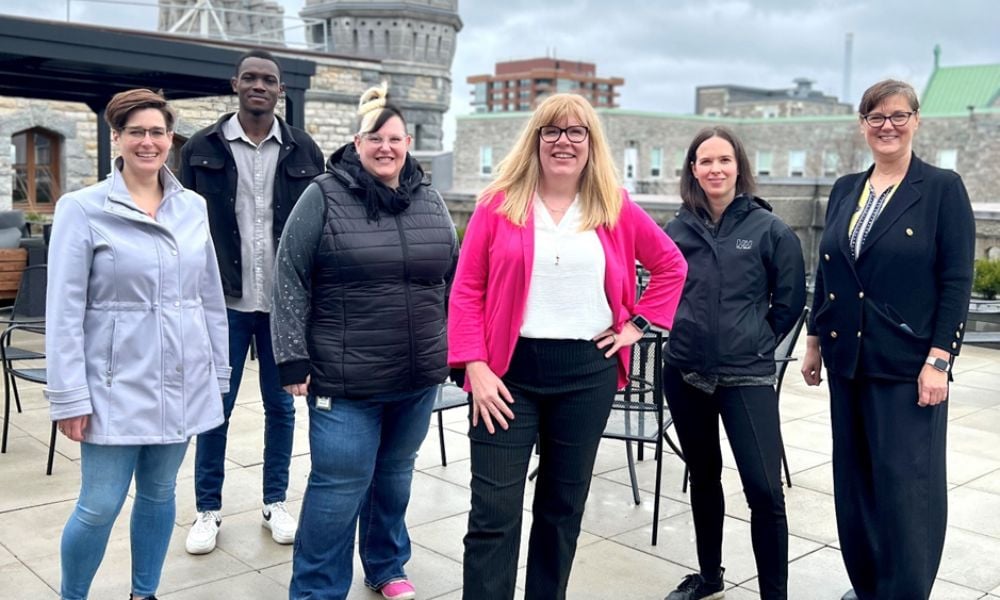Royal Canadian Mint's safety director on her role in creating a psychological wellbeing program

Despite not having a background rooted in mental health, Jennifer Richardson, the Royal Canadian Mint’s director of environment, safety, employee health and wellbeing helped to evolve a comprehensive and holistic psychological wellbeing program alongside her team. Richardson, who will be speaking at our upcoming Canadian Safety Summit, tells Canadian Occupational Safety that what began as an investigation into lost time injuries wound up as a cornerstone of the organization’s culture.
Richardson’s program, initiated before mental health became a focal point in organizational strategies, aimed to address an unexpected rise in lost time injury rates, which Richardson said coincided with a period of lower employee engagement and reported mental health challenges.
"The need for our program came to me through our disability management process,” says Richardson. “At the time, disability management was shared between our Safety and HR departments. We saw a doubling of lost time injury rate in 2014. That was very surprising to us because nothing had changed in the organization from a risk perspective.”
Surprisingly, injuries that wouldn't typically result in lost time were doing just that, and the reintegration of employees post-absence was becoming increasingly difficult. As such, Richardson proposed to the board that they develop a mental health program to respond to this need that they could see, marking the beginning of a significant shift in the Mint's workplace health culture.
“I thought I had two years to develop the strategy and start rolling out the program,” says Richardson. “However, a new CEO arrived in early 2015 and she was a huge mental health advocate. We also had an employee stand up and ask us to go faster at our annual employee meeting, where she had described what confirmed an urgent need to provide mental health resources in the workplace. As such, there was this accelerated pressure on us to go faster. We developed a strategy that was two years in length, called Starting the Conversation and it was based on what we called our No Regrets Moves- a very simple strategy based on two things we thought we could implement quickly as we built the foundation of our mental health program.”
The initiative focused on swift and impactful actions: mandatory Mental Health First Aid (MHFA) training for all leaders and emergency response teams, as well as the introduction of the 'Not Myself Today' campaign. Richardson’s execution of this strategy required creativity, especially considering the diverse workforce operating across various shifts, locations, and accessibility to resources.
“We really had to be creative in how we were going to implement all of these resources,” she says. “To do that, we assembled what we called the Mental Health Working Group (MHWG) which still exists today. They’re ambassadors for mental health, we asked for people to apply to the team - they had to have lived experience [with mental health]. We started compiling and building our program with their input all along the way. The creativity and the collaboration resulted in a whole set of resources for people leaders and employees within the first two years. We also trained 240 people in MHFA, saw a significant increase in our Employee & Family Assistance Program utilization rate, launched our mental health survey where 76% of employees reported an increase in awareness around mental health at the Mint. We also implemented our bi-annual mental health promotional events that continue to engage employees in conversations and offer opportunities for connection while learning.”
The collaborative effort also led to a quarterly mental health newsletter, that plays a crucial role in maintaining awareness and fostering dialogue around mental health. And the program's success was immediate - transcending its initial objective to help champion mental wellbeing and support staff to becoming a cornerstone of the Mint's culture. And, with so much success, Richardson and her team had to learn to go beyond their day-to-day roles in order to champion it even further.
"I felt like a fish out of water...but learning a whole new area of focus was really motivating and professionally gratifying," says Richardson. “I had to teach everyone about mental health, about psychological safety. We didn’t add people to the team to help with the program initially. We leveraged the MHWG and our own health and safety staff who still delivered everything on their plates very successfully.”
And while Richardson’s team did a lot of the heavy lifting here, she’s quick to point out that her success isn’t hers alone.
“HR was definitely involved,” she says. “We had HR at the working group table. I report to the VP of HR and so naturally I work closely with the Directors under the VPs responsibility. Our strategy has evolved over the years and because of the mental health program’s success, the Mint has seen the value in shifting our focus to an integrated and holistic wellbeing program under our People Strategy. In fact, we have recently restructured HR and as part of that process all of employee wellness was moved to my team. It's improved employee experience around anything medical related – because before [they had to go to] HR for somethings or Health and Safety for others, [now] they know to come see my team and we will support them.” Hear more from Richardson when she speaks at the Canadian Safety Summit next month in Toronto.





